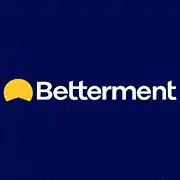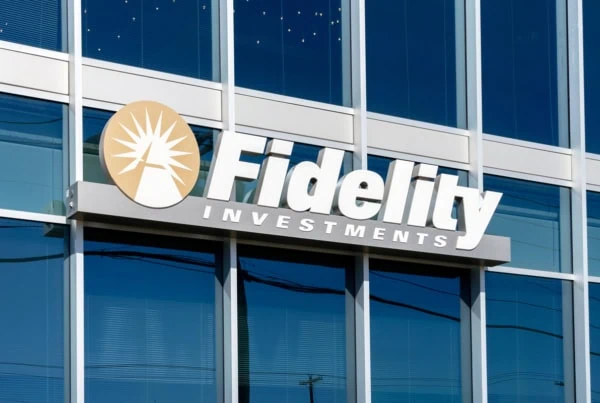Tax-advantaged investments are ones that are either tax-exempt, tax-deferred, or offer other types of tax benefits.
Tax-advantaged accounts hold your tax-advantaged investments while regular taxable brokerage accounts can hold tax exempt investments (or tax-free investments) that do not require you to pay any taxes on income or gains.
Tax-deferred investments require you to pay taxes but not until a later date (usually years in the future) when you withdraw funds.
If later in life you earn income in a lower income bracket when you pull funds out, you only pay tax at the lower rate for your current income level and not the higher rate of when you started investing the money.
Some people have after-tax investment accounts which they have funded with earnings you have paid taxes on already. The advantage of these accounts is that you do not have to pay taxes on any of your investment earnings.
While your entire investment strategy should not revolve around tax advantages, people who pay attention to these benefits can save themselves a significant amount of money. These are some of the most popular tax-advantaged investments for building wealth and the requirements to partake in them.
Table of Contents
Best Tax-Advantaged Accounts
1. Traditional 401(k) Plans
Typically, 401(k) savings plans come from large, for-profit businesses who offer them to their eligible employees. These employees choose a tax-deferred contribution amount that follows that particular employer’s investment options. Some employers will also contribute to the employees’ 401(k) plans, often in terms of a percentage match.
Wages you contribute always remain yours, even if you leave that company, but they may fall subject to a vesting schedule. You can choose to keep the money in their 401(k) plan, transfer it to a new employer’s plan, or roll it into a Traditional IRA without paying penalties or fees.
To withdraw money to use, you have to wait until you have reached age 59 ½ or face a 10% penalty the year you withdraw. Past age 59 ½, the IRS taxes your withdrawals at your income rates for the year. At age 72, you must begin taking required minimum distributions.
Need to Rollover an Old 401k Plan?
If you’ve changed jobs over the years and need to rollover your 401(k) (or 401(k)s) from your old employer’s plan provider, consider using Capitalize.
The company offers the easiest way to move your old 401(k) by helping you to choose a new retirement account, handling all the paperwork on your behalf—for free.
You don’t want to leave your old 401(k) behind, as it sits there forgotten and often accruing fees or failing to update to more suitable investments as you near retirement.
A rollover through a service like Capitalize will move your money into your own account, allowing you easily to keep track of your assets through a new IRA opened with brokerages like Charles Schwab, Betterment and Vanguard.
Visit Capitalize to learn more about how to rollover old 401(k) plans for free.
- Use Capitalize to rollover your old 401(k) plan for free
- The company handles all of the hard work by coordinating with your old 401(k) provider to process the transfer to a new IRA with brands you know like Vanguard, Betterment, Charles Schwab, and more
2. 403(b) Plans & 457 Plans
Both 403(b) plans and 457 plans have very similar features to 401(k) plans. The difference is that 403(b) plans are for employees of non-profit, tax-exempt business, such as schools, churches, or hospitals.
Employees fund these accounts with tax-deferred contributions and accumulated earnings which do not go to shareholder dividends. Like a 401(k) account, tax rules and contribution limits apply.
457 plans, on the other hand, act like 401(k) plans but for government employees, though they offer a few additional benefits as well.
Some employers allow double contributions when people reach a three year window of their plan’s normal retirement age.
Additionally, some employers offer both a 401(k) or 403(b) as well as a 457 plan and you can fund both. While early withdrawals from 457 plans are subject to taxes, they do not face the 10% penalty.
3. Traditional IRA
A traditional Individual Retirement Account (IRA) is a tax-deferred investment account available through numerous brokerages and investing services. As long as you are younger than 72, you can deduct contributions on your tax return the year you contribute to the account.
When you withdraw after age 59 ½, you pay income taxes at your marginal tax bracket. Hopefully this happens after you have moved to a lower tax bracket than when you added to it in your earning years.
If you withdraw before that age, you’ll need to pay the 10% early withdrawal penalty (unless you meet an exemption requirement). Note that some years you might not be allowed to use your IRA contribution as a tax deduction.
This could happen if your modified adjusted gross income goes over the income threshold, so check requirements carefully.
Betterment: Consider a Diversified Approach to Your IRA Investments
- Available via desktop, Apple iOS and Google Android
- Best for: Passive investors
- Sign up by clicking the button below
When looking to build a diversified retirement portfolio automatically, consider opening an IRA account with Betterment, one of the best stock investing apps for beginners.
Betterment is a robo-advisory service that allows you to invest in a diversified portfolio of low-cost ETFs, which provide both core and thematic exposure. (So, you can get a basic set of stocks and bonds, or you could invest in themes like Social Impact or Climate Impact.)
Although Betterment is a robo-advisor, it does offer access to human advisors, too. This is a big plus to me—I’m a self-directed investor, but even if I convinced myself to lean on a robo-investor, I’m the kind of person who wants to learn what I can, and I’d prefer to be able to receive guidance from a financial pro. This sets Betterment apart from many other competing robo-advisors.
When deciding how to invest your retirement funds for the long-term, you’ll want to consider a platform like Betterment.
- The Betterment app gives you the tools, inspiration, and support you need to become a better investor.
- Start with as little as $10 and use the top-rated mobile app to set up automatic investing into diversified ETF portfolios.
- You can also invest in diversified preset cryptocurrency portfolios.
- Customize your risk tolerance and investment goals with guidance available at any time.
- By upgrading to Premium, you can unlock unlimited financial guidance from a Certified Financial Planner™.
- Hands-off investment management
- Diversified portfolio that automatically rebalances
- Low-cost investment selection
- Limited investment selections
- Limited crypto diversification in cryptocurrency portfolios
5. Roth 401(k), 403(b), 457 Plans
The main difference between a traditional 401(k) and a Roth 401(k) is that a Roth 401(k) is tax-deferred rather than giving you a benefit the year you contribute.
Distributions are tax-free if they have been in your plan for at least five years and you are at least 59 ½ years old when you withdraw. If you don’t follow those requirements, you’re subject to a 10% early withdrawal penalty.
Again, once you’re 72 you have to take distributions. You can avoid that by rolling your funds into a Roth IRA plan. You can contribute to both a traditional and Roth IRA as long as the total doesn’t exceed annual limits.
For Roth 403(b) or 457 plans, the same similarities and differences apply. The main difference is that taxes are deferred.
6. 529 Plan
In the past, you could use funds contributed to a tax-advantaged investment in a 529 Plan for college expenses. However, tax reform changed the rules to allow funds contributed to a 529 plan for any qualified educational expense from K-12 through college and graduate school.
In effect, a 529 savings plan acts as a tax-advantaged investment account helping your family save for education expenses. It works by contributing post-tax dollars into your investment account and then seeing your investments grow tax-free.
When the time arrives to pay for qualified education expenses (e.g., tuition & fees, room & board, books, computer, etc.), the withdrawals you make from the account come to you tax-free.
In the event you choose to withdraw earnings from the account for a non-qualified expense, you must pay applicable taxes and a 10% penalty.
In short, a 529 plan acts in a similar manner to a Roth IRA account, but instead of retirement, it goes toward planning for educational expenses for the designated account beneficiary.
What are the biggest benefits of contributing to a 529 plan?
- First, your investments grow over time. When comparing this to a typical savings account, the money invested in a 529 plan compounds over time.
- Second, the appreciation on investments held in the account does not get taxed if they are used for qualified educational expenses. In other words, the appreciation does not fall subject to federal income taxes nor, in most cases, state taxes. This keeps more money in your pocket for important expenses.
- Third, these funds do not remain forever locked in this account. In fact, because 529 plans act similarly to a Roth IRA, you retain the flexibility of withdrawing your original contributions (the “principal”) without additional taxes or penalties.
Backer: Start Investing in Your 529 Plan Today
College Savings Plans through Backer work similar to traditional 401(k)s and IRAs. Contributions you make get invested into mutual funds or other investment vehicles like age-based investments called target date funds.
These differ slightly from the goals of age-based funds you see in retirement plans though. Instead of gradually becoming more conservative as you near retirement, these transition to more stable underlying investments as your child nears college age.
These plans also get administered at the state-level, whereas retirement plans do not.
One option to consider for opening a 529 College Savings Plan is through the company Backer. The company provides top-tier 529 Savings Plans which can collect gifts from family and friends through social savings.
You can share an invite code for friends and family to make contributions to a 529 Savings Plan for birthdays, holidays or other noteworthy events (like making honor roll!).
- Backer allows you to invest your educational savings tax-free in a 529 plan and also allows for family and friends to help you to save more.
- Use low-cost index funds to invest in different asset classes, including stocks and bonds.
7. Health Savings Account (HSA)
Health Savings Accounts offer what is considered a triple tax benefit. If you have an employer-sponsored account, your contributions are taken out of your paycheck before taxes.
People can set up their own HSA and deduct their contributions to pay less in taxes that year. The money in your HSA grows on a tax-deferred basis and some accounts, like those from Lively, allow you to invest your savings in mutual funds or other types of investments.
You can withdraw money at any time from health savings accounts for qualified medical expenses and the distribution is completely tax-free.
However, if you withdraw funds not used for medical expenses before age 65, there is a 20% penalty in addition to any capital gains.
After age 65, you are able to withdraw money for any purpose without penalty. You are at no point forced to take distributions from health savings accounts, making them incredibly tax efficient for not needing to take distributions unless you have qualified expenses.
An additional benefit is that money in an HSA rolls over each year and isn’t lost if unused, making them one of the best investments for young adults.
Note that there are restrictions on who can open an HSA. To be eligible, you need to be enrolled in a High Deductible Health Insurance Plan (HDHP) and not receive Medicare.
You also cannot be covered under any disqualifying health coverage or claimed as a dependent on another person’s tax return.
Lively HSA: Start Saving Money in a Health Savings Account with Lively
Looking to trim your tax bill and also save money for medical needs? Consider opening a health savings account with Lively, a company which has won accolades from companies like Investor’s Business Daily and one of Forbes’ 50 best fintech startups.
Lively helps people prepare for their future financial needs by making smart decisions about finances and healthcare today.
Lively charges no fees for individuals and families, has secure contributions and effortless transfers, provides FDIC-insured deposits when held as cash in their savings account, and offers support when you need it.
- Maintenance/other recurring fees: None
- Investment fees: Schwab Health Savings Brokerage Account: $24/yr*. HSA Guided Portfolio: 0.50%/yr.
- Minimum balance to invest: $0
- Investment options: Stocks, bonds, mutual funds, ETFs (investments depend on account type)
- Maximum investment flexibility via self-directed Schwab HBSA
- No minimum balance to invest
- Low fees for mutual funds available in HSA Guided Portfolio
- Powerful, intuitive mobile app
- Bill pay
- FDIC-insured cash accounts
- SIPC-insured investment accounts
- High Trust Pilot Rating (Especially relative to competitors)
- HSBA fees are high (on a percentage basis) for low- to mid-balance accounts.
- HSA Guided Portfolio fees are high (on a percentage basis) for mid- to high-balance accounts.
8. Municipal Bonds
Municipal bonds (muni bonds) are used by state and local governments to fund projects, such as building new schools, office parks, or public infrastructure projects.
When you buy a bond, you loan money to the government for a predetermined amount of time and receive a virtually-guaranteed rate of return through interest payments from the bond paid twice a year.
Unlike with corporate bonds, the interest on municipal bonds is tax-exempt from federal taxes and, if those bonds are issued by the state you reside in, from state and local taxes as well.
This makes for an ideal tax free passive income source and one of the best passive income investments.
Also, this is why you would want to hold muni bonds in a non-tax advantaged account- these bonds already avoid tax consequences. Muni bonds would not be the best investments for tax-deferred accounts.
If your income is over a certain limit, the interest may be subject to the Alternative Minimum Tax (AMT). When the bond matures, you get your principal amount back. It’s also possible to make money from municipal bonds by selling them at a higher price than you paid for them.
M1 Finance’s municipal bond fund offerings make great tools for buying and holding muni bonds in your investment portfolio.
There is very little risk of default with these high-yield investments. However, inflation can affect the interest rate (and thus the rate of return).
9. Charitable Giving
The U.S. tax code has incentives for giving charitable gifts. If you itemize your taxes, you can deduct the value of your donation from your taxable income (limits apply).
There are several strategies to maximize your giving. Let’s say you donate $1,000 annually to the Books for Kids Foundation and another $1,000 for the Red Cross.
If you have a particularly high-income year, consider a donor-advised fund. A donor-advised fund can be thought of as a personal charitable savings account.
These are controlled by a nonprofit, referred to as a sponsoring organization, that invests the assets and manages your account. Some examples are Schwab Charitable and Vanguard Charitable.
You tell them which nonprofits you would like to donate to from your account. This fund would have more than your usual donations. You might put five years’ worth of donations into it.
The benefit is that you receive an immediate tax deduction during your high-earning year and you still have money set aside to donate to those charities over the next few years. Simply claim this deduction using the best tax software and track it with useful financial apps.
You can also maximize your giving by donating appreciated stock rather than cash. If you donate long-term appreciated stocks or mutual funds to public charities, you can deduct the fair market value of the stock (as opposed to your cost basis).
This might help to eliminate capital gains taxes you have during the year. Contributing real estate or privately held business interests can work similarly.
Related Questions on Accounts and Investments with Tax Benefits
What are Tax-Deferred Accounts?
Some investment accounts offer special tax benefits that can lower your taxable income in the year you contribute or provide tax savings later in life by growing tax-free.
Contributing to a tax-deferred account allows you to invest pretax dollars, lowering your tax burden in the year of contribution.
Traditional tax-advantaged accounts offer this tax benefit and come with annual contribution limits. IRAs allow the lesser of $6,000 or your earned income during the tax year.
Individuals aged 50 or older have an extra $1,000 catch-up contribution available, allowing them more opportunity for deferring taxes.
What are Tax-Free Accounts?
Tax-free accounts work the opposite of tax-advantaged accounts that offer the ability to defer taxes.
Tax-free accounts allow you to contribute after-tax dollars that grow without tax liability or capital gains taxes.
Roth accounts are an example of this type of tax advantaged account. Roth IRAs have the same annual contribution limits as Traditional IRAs.
Can I Invest in Bitcoin in My IRA?
You can invest in cryptocurrencies like Bitcoin, Ethereum and others through a special type of tax-advantaged account called a self-directed individual retirement account (SDIRA).
These accounts can hold alternative investments, unlike the stocks, mutual funds, exchange traded funds and the like held in normal IRAs or employer-sponsored tax advantaged accounts.
Depending on whether you invest in an SDIRA with tax-deferred or after-tax dollars, this may impact whether you must pay capital gains on your investments.
What Investments Can I Make to Lower My Taxes?
By investing in a traditional retirement savings vehicle like an IRA or 401(k), you can lower your taxes now, pushing your income into lower tax rates and have your investment grow tax deferred.
Just the same, you can also invest with after-tax contributions in Roth equivalents, allowing your retirement savings to grow without tax consequence down the road.
What is the Most Tax Efficient Investment?
One of the most tax-efficient investments comes from investing in tax-advantaged accounts.
The tax treatment awarded to these retirement accounts enable you to build retirement savings in a tax-advantaged manner, allowing you to keep more of your investment gains than you would under a taxable account.
Investing in stocks, exchange-traded funds or mutual funds act as great ways to build wealth and maximize tax efficiency for your investment portfolio.
For taxable accounts, one of the most tax-efficient investments comes from investing in municipal bonds due to their preferential tax treatment from federal income tax.
However, as a trade off on these non-existent federal tax payments, these bonds tend to carry lower yields than other fixed income securities.
How Much Should I Contribute to My Tax-Advantaged Accounts?
Contributing to your tax-advantaged accounts should serve as a priority for how you budget. These funds provide long-term financial security for when you decide to leave the labor force.
Most recommend saving at least 10-15% of each paycheck toward retirement of your own money while also taking advantage of any employer matching funds along the way.
Depending on when you start investing, saving at this clip could be a good personal finance decision, though contributing more should increase the certainty of meeting your financial goals, all things equal.
If you’ve started a bit later, you’ll want to consider increasing your contribution and take advantage of any catch-up contributions made available through the tax code.
Why You Should Consider Tax-Advantaged Investments
With some careful planning, tax-advantaged investments can save you a substantial amount of money you would otherwise spend on taxes over the years. Take advantage of investments that are tax-exempt, deferred, or provide other tax breaks.
Just remember not to invest more than you can afford. Go over your expected earnings each year and don’t make any major investments without consulting with an expert or at least conducting thorough research.
Taxes are unavoidable, but you can strategically make tax-advantaged investments toward financial independence.





















